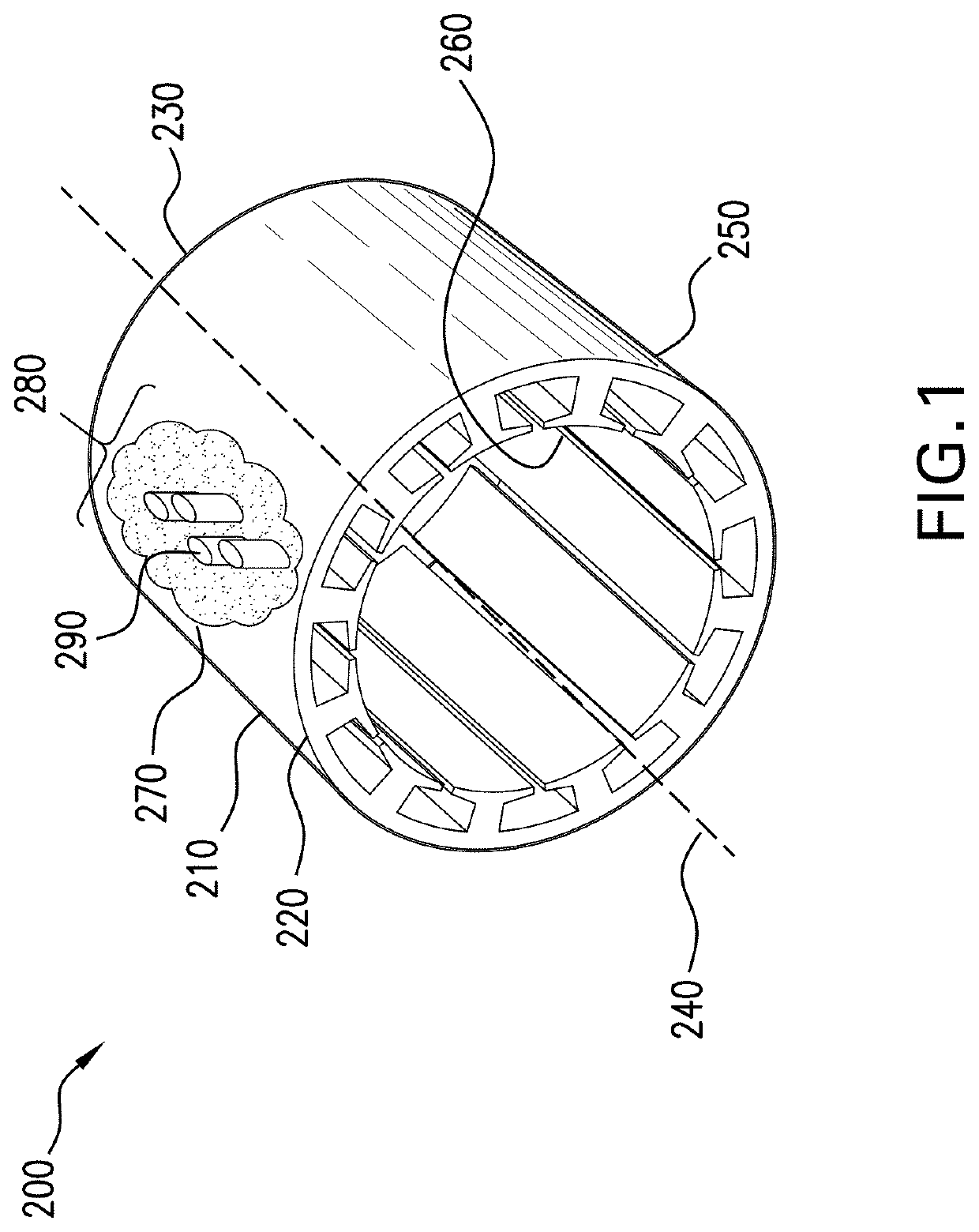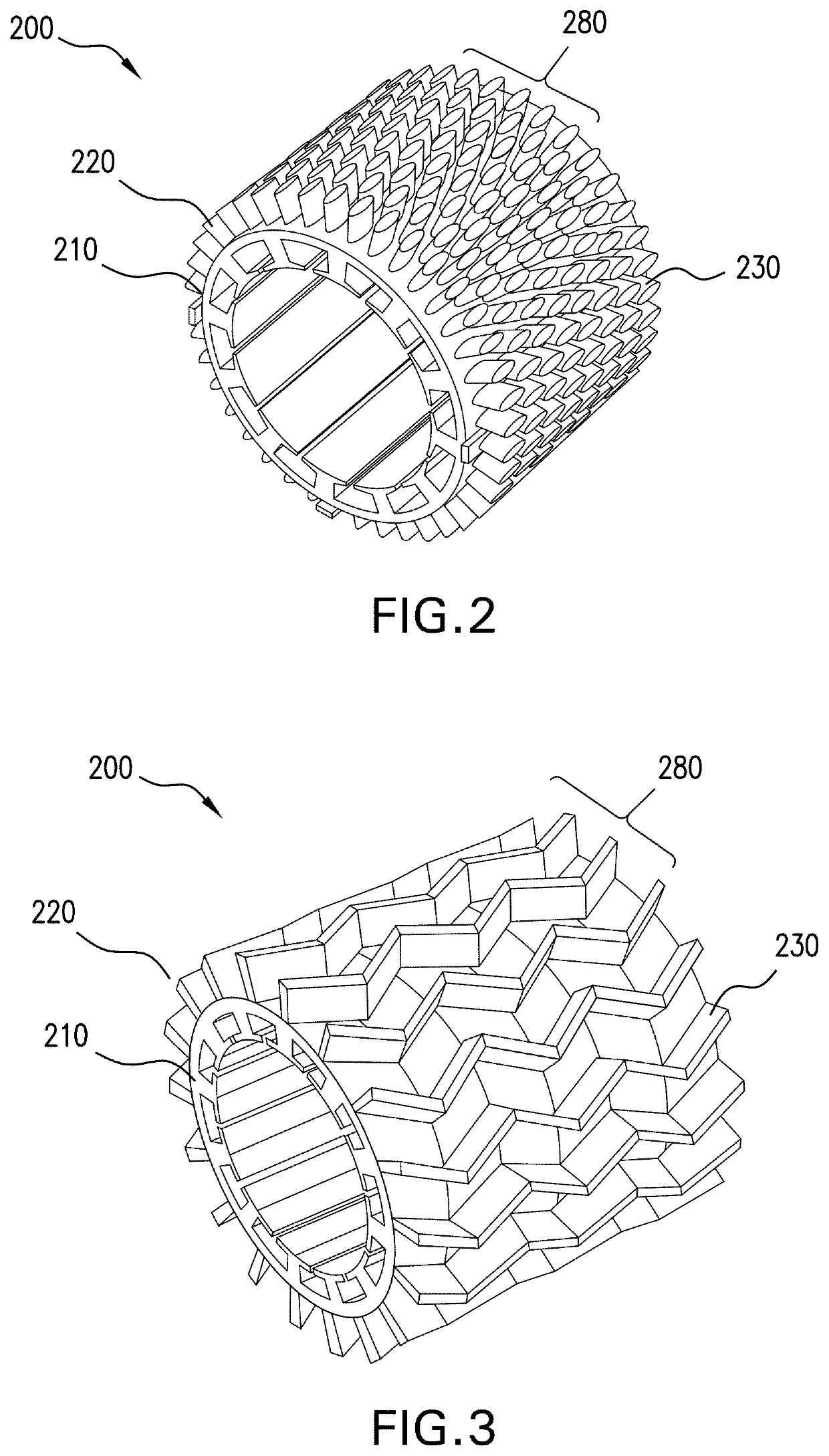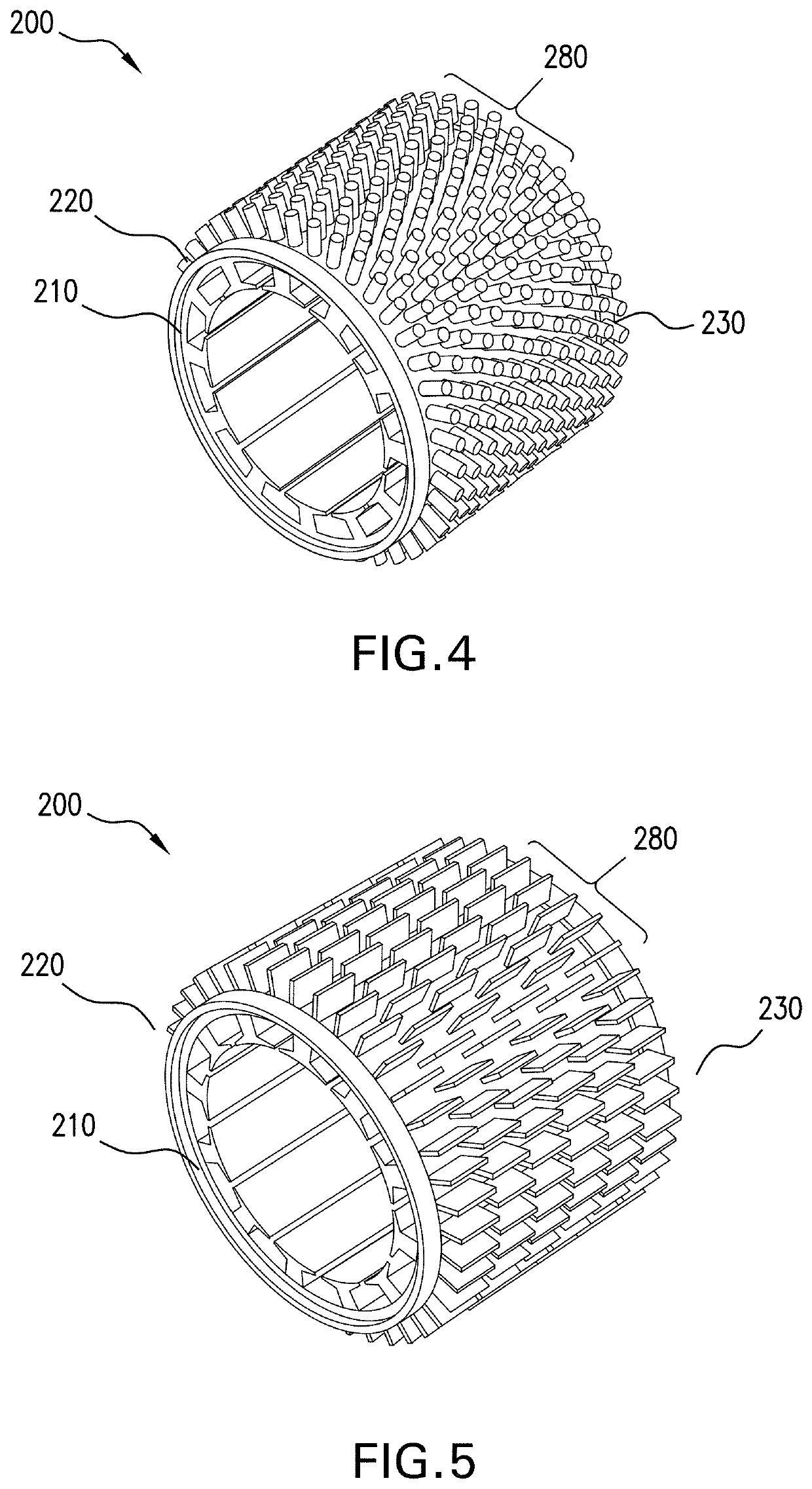Electric machine cooling features
a technology of electric machines and cooling features, which is applied in the direction of manufacturing stator/rotor bodies, magnetic circuit shapes/forms/construction, windings, etc., can solve the problems of reducing the efficiency of heat transfer into aluminum, limiting the contact resistance between aluminum and the electric machine, and generating heat, so as to reduce the contact resistance of the interface
- Summary
- Abstract
- Description
- Claims
- Application Information
AI Technical Summary
Benefits of technology
Problems solved by technology
Method used
Image
Examples
Embodiment Construction
[0027]A detailed description of one or more embodiments of the disclosed apparatus and method are presented herein by way of exemplification and not limitation with reference to the Figures.
[0028]Turning to FIG. 1, disclosed is a stator 200 comprising a first cylindrical member 210 that may have a first plurality of axially opposing ends including a first front end 220 and a first back end 230 mutually spaced along a first stator center axis 240. The first member 210 may have a first outer diameter (OD) side 250 and a first inner diameter (ID) side 260. In addition, the first member 210 can be formed of material such as laminated electrical steel.
[0029]In one embodiment, a base layer 270, a portion of which is illustrated schematically in FIG. 1, may be disposed directly against the first OD side 250 of the first member 210. This base layer 270 can be formed of material that is different than the material forming the first member 210. In one embodiment, the base layer 270 is formed ...
PUM
 Login to View More
Login to View More Abstract
Description
Claims
Application Information
 Login to View More
Login to View More - R&D
- Intellectual Property
- Life Sciences
- Materials
- Tech Scout
- Unparalleled Data Quality
- Higher Quality Content
- 60% Fewer Hallucinations
Browse by: Latest US Patents, China's latest patents, Technical Efficacy Thesaurus, Application Domain, Technology Topic, Popular Technical Reports.
© 2025 PatSnap. All rights reserved.Legal|Privacy policy|Modern Slavery Act Transparency Statement|Sitemap|About US| Contact US: help@patsnap.com



